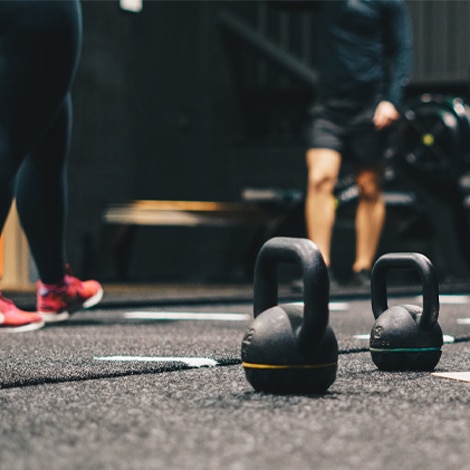Police officers, firefighters, paramedics, and other emergency services personnel face unique physical, cognitive, and emotional challenges. They must perform in high-consequence environments at irregular hours and go from stationary to full speed at a moment’s notice.
This is why preparation and recovery are paramount. In this article, we’ll make the case that improving first responder outcomes and durability is best achieved when combining human know-how with technology-enabled monitoring.
HIGHER INJURY RATES AND MORE LOST WORK DAYS
The Bureau of Labor Statistics surveyed musculoskeletal injuries among a wide range of job roles, many of which involve physical exertion. They discovered that firefighters have the highest incidence of injury at 191.1 per 10,000 full-time workers and 7,170 lost work days, with emergency medical technicians (EMTs) and paramedics second with 174.7 and 4,510, respectively. Both groups were far higher than the average across all professions evaluated, which were 29.1 injuries per 10,000 workers.[1] The actual injury incidence and lost days numbers are likely to be higher if part-time workers, trainees, and volunteers (particularly common in fire departments) were recorded and added to the total.
While fighting fires is a hazardous occupation, a study published in the NFPA Journal stated that in 2019, 8,175 firefighter injuries occurred during training and a further 10,575 from other on-duty activities. In other words, firefighters often get hurt while preparing for the rigors of their occupation. 23,825 incidents – 39 percent of all reported firefighter injuries – occurred at the fireground. Of these, the most commonly cited causes were strain and overexertion, with sprains and muscular pain accounting for 41 percent of fireground incidents.[2]
In a review of the study, co-authors Richard Campbell and Ben Evarts stated, “The risk of injury is common to a full gamut of firefighter job demands.”[3] They went on to write that, “Firefighters work in varied and complex environments that increase their risk of on-the-job death and injury.”
First Responders also deal with an injury rate far higher than other occupations. According to a separate BLS report, police officers’ incidence of sprains, strains, and tears in 2018 was 133.2, compared to an average of 34 across all jobs surveyed. Soreness and pain came in at 79.6 cases per 10,000, with other professions at just 18.7.[4]
MONITORING FIRST RESPONDER READINESS, RECOVERY, AND INJURY
With these numbers in mind, tracking simple metrics that might be applicable to athletes – like daily steps count, distance covered, and so on – is likely to be insufficient when assessing First Responder outcomes, evaluating readiness, managing acute injuries, and improving long-term resilience. More sophisticated, holistic, and nuanced monitoring must be conducted if performance and medical staff are to adequately prepare firefighters, police officers, EMTs, paramedics, and other First Responders for the physical tasks they must perform under duress in the field.
A study of police academy cadets found that monitoring their breathing rate and heart rate variability provided an accurate picture of their mental workload. The authors asserted that such data can inform “quick feedback and adaptive decision making” that helps trainee police officers better manage their anxiety level and the cognitive demands of training.[5]
Sometimes, first responder monitoring can yield surprising results. For example, a study conducted by Portuguese researchers found that firefighters’ stress levels (as measured by real-time ECG and HRV data) spiked more when they responded to accidents than they did while on scene at fires. The authors concluded that such assessments are “useful for the monitoring of stress levels and its potential impact on health of first responders. Additionally, it could also be an important tool for the design and implementation of efficient interventions and informed management resolutions.”[6] They noted that self-reporting of on-the-job stress would also be beneficial for staff responsible for firefighter wellbeing.
MAKING MORE INFORMED AND TIMELY DECISIONS
When combined with objective measures from devices like activity trackers, force plates, and sleep monitors, results from annual physical examinations, and metrics from regular physical and cognitive tests, self-reporting helps provide a comprehensive picture of first responders’ readiness and preparedness.
Staff can then make the necessary adjustments to training, recovery plans, and shift schedules to ensure that personnel are exposed to sufficient load to prompt beneficial adaptation, without being overtaxed. Historical data can also be used to evaluate injuries and overlay these with the activities that were taking place at the time, so that different training modalities can be tailored to building competence and capacity rather than breaking personnel down.
The ability for fire and police chiefs, instructors, and other personnel to view data and be notified if someone has a red flag allows them to make on-the-fly changes that can reduce the chance of an incident and preempt burnout. Given that active duty tasks like fighting a house fire or clearing a traffic accident scene cannot be mitigated, it is the physical training and inactive duty hours that can be best manipulated to reduce the likelihood of injury, manage physical, cognitive, and emotional stress, and train smarter.
THE RIGHT HUMAN PERFORMANCE PLATFORM
Fusion Sport partners with innovative leaders in elite Sports, Military, and First Responder organizations to solve the most challenging Human Performance problems.
The Smartabase Human Performance Platform is tailor-made for the sophisticated monitoring and analysis of First Responder health and fitness data. Integrating with a wide range of wearables and third-party platforms, it automatically ingests training and recovery data, collates it, and presents it so the information can be both understood and acted upon.
First Responders can take ownership of their own health and fitness using the Smartabase Mobile App. The app helps streamline data capture, including information on sleep, mental state, muscle soreness, and so on. By putting their historical health and fitness data in their hands in a meaningful way, First Responders can get to know their own bodies better and understand what factors impact their everyday performance.
IF YOU ENJOYED THIS ARTICLE, YOU MAY ALSO LIKE…
- VIDEO: Optimizing the Human Weapon System
- H2F in the Military Part 1: Using Data to Individualize Large Scale Human Performance
- Evaluating Warfighter Readiness Through Reaction Time and Task Completion Assessment
[1] “First Responders Rank Highest in Musculoskeletal Disorders,” Society for Trauma Education and Empowered Recovery, February 19, 2020, available online at https://blog.traumacoverage.com/blog/first-responders-highest-in-musculoskeletal-disorders.
[2] Richard Campbell and Ben Evarts, “Firefighter Injuries in the United States,” NFPA Journal, November 2020, available online at https://www.nfpa.org/News-and-Research/Data-research-and-tools/Emergency-Responders/Firefighter-injuries-in-the-United-States.
[3] Richard Campbell and Ben Evarts, “Firefighter Injuries in the United States in 2019,” NFPA Journal, November 1, 2020, available online at https://www.nfpa.org/News-and-Research/Publications-and-media/NFPA-Journal/2020/November-December-2020/Features/FFI-Report.
[4] “Injuries, Illnesses, and Fatalities Fact Sheet Police Officers,” U.S. Bureau of Labor Statistics, April 2020, available online at https://www.bls.gov/iif/oshwc/cfoi/police-2018.htm.
[5] Tiwari A et al, “Prediction of Stress and Mental Workload during Police Academy Training Using Ultra-Short-Term Heart Rate Variability and Breathing Analysis,” Europe PMC, July 1, 2020, available online at https://europepmc.org/article/med/33019001.
[6] Susana Rodrigues et al, “Stress Among On-Duty Firefighters: An Ambulatory Assessment Study,” PeerJ, December 11, 2018, available online at https://www.ncbi.nlm.nih.gov/pmc/articles/PMC6294048/.








